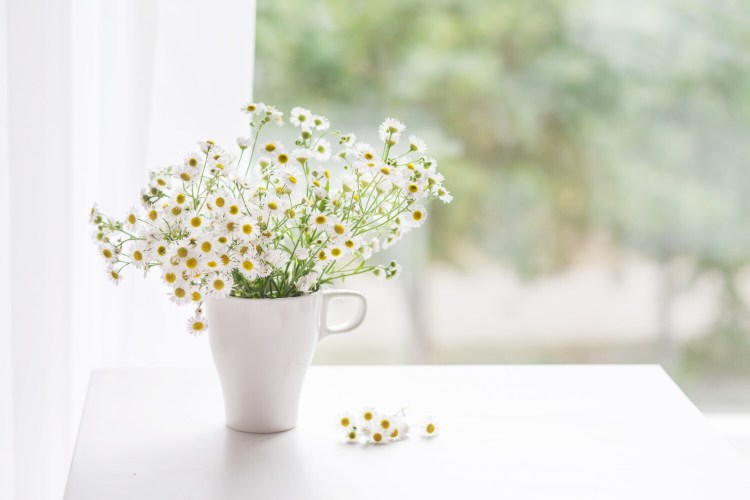For much of the year, my wife and I display cut flowers in every room of our house that’s in use. That’s fewer rooms than usual for the past 15 months (chalk it up to no guests during the pandemic), but at any one time we have a half dozen containers of flowers, interesting branches and/or leaves in the house. I’m not counting houseplants.
This display continues from the time the first hyacinths come up in the spring – neither Nancy nor I have ever figured out how to cut the even-earlier crocuses for display indoors – until we take down the Christmas greens on or near New Year’s Day.
We have friends, great gardeners all, who never bring cut flowers inside. They prefer to look at the flowers outdoors. I try not to be judgmental, but I think they are denying themselves one of life’s little joys – lifting your eyes from whatever you are reading or waking up in the morning and glimpsing flowers in a vase.
I use the word “vase” loosely. We display Johnny-jump-ups (a small, colorful viola) in an antique inkwell and cut lilac stems in a huge porcelain water jug that is itself decorated with lilacs. Both are beautiful and, just as important, fragrant. I enjoy the smell of the flowers as much as the sight of them.
Early in the growing season, the cut flowers come mostly from bulbs. I mentioned hyacinths, which are early and fragrant; these are followed by all kinds of daffodils and then tulips. In late May, we have a white flower that we got from Nancy’s grandmother, who called them Narcissus although Narcissus is the botanical name for all daffodils.
We grow two types of cut flowers. The first come from perennials or shrubs that we grow mainly to be viewed outside: lilacs, daffodils, tulips, peonies, viburnums, roses, rhododendrons, azaleas, quince and many other plants fit into that category. We grow them to be part of the landscape. They look good when we pull our car into the driveway or when walk around the house and happen to look out the window. Our goal is to have something in bloom all the time, and we succeed pretty well.
A few flowering branches on the woody plants that make up the landscape won’t be missed, so we cut them off. Before putting the branches in water, it helps to use hand pruners to cut an X in the bottom of the stems, splitting the stems so they take up water better. Don’t mash the woody stems with a hammer, as many “authorities” tell you to. Flowering branches prefer clear, warm water, without sharing their vase with mashed bits of branches.
We’ve planted enough bulbs over the years that a few stems won’t be missed. We plant these bulbs in bunches of at least five because they look better as part of a mass. A few of the flowers brought indoors doesn’t diminish the beauty of that mass by much. But don’t cut the leaves when you cut tulips. You need to leave the foliage to feed the bulb in order to get nice blooms the following year.
The second type of cut flowers in our garden are ones we plant primarily to be used as cut flowers. These often grow in what we call the vegetable garden, even though we devote fully a third of the space to flowers.
Dahlias and gladioli dominate that space, mostly because every growing season they produce offspring. The Maine climate means you’ll have to dig up the bulbs (glads) and tubers (dahlias) every fall for storing over the winter. Both dahlias and and glads can be used as part of the landscape, although the dahlias make the more striking display.
In addition to those bulbs, the cutting flowers we often grow are tithonia, zinnia and nasturtium. There are many others we could try, and you may want to, but these three are our favorites. Farm stands and nurseries have been selling seedlings of these cutting flowers for a week or more more, so if you don’t want to direct seed them into your garden – which I’ve done successfully with the tithonia, zinnia and nasturtium – buy the seedlings.
The only outdoor flowers that I have never cut to display inside are the native wildflowers. Our trout lily, trillium and bloodroot looked better than ever this spring. But because one reason we grow them is to help wildlife, I thought it best to leave the blossoms alone.
Tom Atwell is a freelance writer gardening in Cape Elizabeth. He can be contacted at: tomatwell@me.com.
Send questions/comments to the editors.


